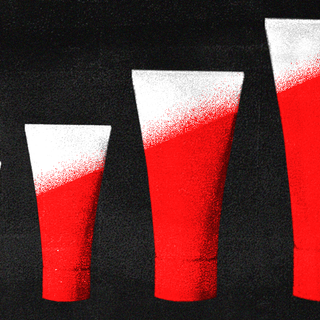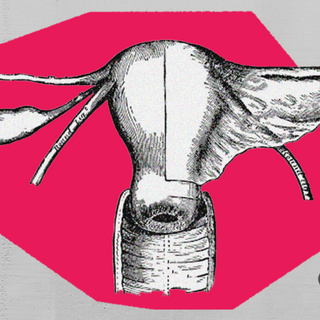
The Controversy Around Recognizing ‘Prolonged Grief Disorder’ as an Official Diagnosis
The diagnosis may help boost awareness about how debilitating intense grief can be, but critics believe it will just pathologize the emotion.

“Prolonged grief disorder” is now an official diagnosis. After much deliberation in the scientific community, the DSM-5 — or the fifth edition of the Diagnostic and Statistical Manual of Mental Disorders published by the American Psychiatric Association (APA) — deemed prolonged grief to be a distinct disorder.
Discussions around grief have gained more prominence while we, as a society, are still emerging from the global health and mortality crisis that Covid19 was. But living with prolonged grief isn’t a modern experience. Just like “normal” grief, prolonged grief, too, has existed for centuries — albeit namelessly so.
“They were the widows who wore black for the rest of their lives, who withdrew from social contacts and lived the rest of their lives in [the] memory of the husband or wife who they had lost… They were the parents who never got over it, and that was how we talked about them,” Dr. Paul S. Appelbaum, an American psychiatrist who chaired the steering committee overseeing revisions to DSM-5, told The New York Times.
However, there are many critics of the move. They believe everyone grieves differently and categorizing some experiences as a “disorder” only goes to pathologize what is a normal, common human emotion that probably everyone experiences in their lifetimes. They also worry it will allow pharmaceutical companies to exploit the diagnosis to sell people medicines to ease the mourning process.
“We run a risk of stigmatizing the grieving, reducing their dignity, and medicalizing the natural process… Some practitioners, especially in primary care after a 10-minute visit, might overuse the new label, over-diagnose, and over-prescribe,” Dr. Allen Frances, who is presently affiliated with the Duke University School of Medicine in the U.S., told The Washington Post.
Related on The Swaddle:
When Talking About Death Is Taboo, How Can Grieving People Heal?
Other critics feel it’s a “short-sighted” and “dangerous” move to tell people what they’re experiencing isn’t normal. But people supporting the recognition of disordered grief believe that accepting what someone is experiencing is beyond what is considered “normal” will not only help validate their experiences, but also enable them to understand what they’re going through and access treatment.
But experts note that grief, in the long term, can be debilitating — it can impair one’s sleep and one’s ability to perform everyday functions like they used to before the grief struck them, besides causing them to experience sudden, intense bouts of emotional overwhelm. “Grief can completely derail functioning. It is not linear and often shows up in unexpected ways,” Kassondra Glenn, a psychotherapist, told Healthline.
Yet, grieving people are often told to “get over it” like “everyone else does” — invalidating their pain, which, in turn, can lead them to experience depression eventually, as research suggests.
The inclusion of prolonged grief as a disorder can perhaps help us avoid that result. “Because many of us live in a diagnosis-centered society, the addition of prolonged grief will allow those who experience it to feel more validated in their emotions… It will allow people to have more accurate language around their grief, and perhaps allow grief to become a more acceptable [and] integrated experience in society,” Glenn notes.
Related on The Swaddle:
‘Survivors’ Guilt’ Is Hitting Covid19 Survivors In India, Complicating Their Grieving
In order to be diagnosed with prolonged grief disorder, the duration of grief a person experiences would have to “exceed expected social, cultural, or religious norms,” APA’s website states. Not only that, the symptoms they experience — like emotional numbness or intense emotional pain, persistent loneliness and difficulty connecting with people, beliefs akin to nihilism, and disbelief surrounding the death of the person one is grieving while avoiding reminders of the fact that they’ve ceased to exist — must also not be explicable through the diagnostic criteria of another mental health disorder.
What makes one more susceptible to the disorder is sudden or traumatic deaths of loved ones — like suicide, an unexpected but fatal heart attack, or as many of us recently witnessed, the pandemic. Experiencing multiple losses, of course, can make one’s grief more profound, especially if they lack social support, or have a history of trauma or other mental health disorders.
Experts involved in including prolonged grief disorder as an official diagnosis also believe the current times make its inclusion crucial. “The circumstances in which we are living, with more than 675,000 deaths due to Covid19, may make prolonged grief disorder more prevalent,” Dr. Vivian B. Pender, president of the APA, noted, adding, “Grief in these circumstances is normal, but not at certain levels and not most of the day, nearly every day for months.”
Pender’s advice: “If you’ve recently lost someone close to you, it’s very important to check in with yourself… Help is available.”
Devrupa Rakshit is an Associate Editor at The Swaddle. She is a lawyer by education, a poet by accident, a painter by shaukh, and autistic by birth. You can find her on Instagram @devruparakshit.
Related


Scientists Find a Genetic Link Between Endometriosis and Ovarian Cancer
